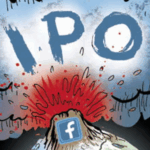 Havas unveiled a tool Monday designed to measure inventory quality holistically by assessing fraud, viewability, ad clutter and brand context.
Havas unveiled a tool Monday designed to measure inventory quality holistically by assessing fraud, viewability, ad clutter and brand context.
The tool, called a meta-quality barometer, provides a quality score for publishers or inventory providers.
“We need to help media vendors and tech partners to better guarantee the quality of the inventory,” said Dominique Delport, global managing director of Havas Media Group.
Just as luxury brands maintain control over their supply chains to ensure product quality for their customers, Havas hopes to guarantee value for its advertisers. It will set a benchmark at the top 25% of publishers and media suppliers. Over the coming weeks and months, it will let its partners know they need to work toward that benchmark.
Havas doesn’t initially plan to cut from the plan publishers whose scores fall at the bottom. “We want to work with the people that have quality issues and make that inventory better, to make the quality better for the industry overall,”said Rob Griffin, head of innovation at Havas.
The company is taking a different tack than other media conglomerates. WPP agency GroupM has adopted an all-or-nothing approach, requiring publishers to adhere to 100% viewability, a controversial stance.
“I don’t think 100% viewability is doable in the long term,” Griffin said. “Purely saying the ad is viewable is short-sighted. The visibility of the ad for me is a more interesting conversation.”
Visibility, as Havas defines it, takes into account not just viewability, but human traffic, ad clutter, load time and brand context.
Havas created its ad quality barometer by pulling data from outside vendors into its Artemis Alliance platform, a 14-year-old product that originally used data from third-party ad servers for campaign optimization. It now analyzes 300 billion touchpoints a year.
Those outside vendors supplying information for the quality score include Adledge, Catchpoint, ClarityAd, Hub’Scan, Sizmek and White Ops.
While Havas’ quality assessment tool is designed to influence both direct and programmatic buys, it was the latter that accelerated its development, Delport said.
“When it’s about programmatic and exchanges, you start losing visibility of what you sell, and the whole inventory you connect with,” Delport said.
The goal for the meta-quality barometer isn’t to “guarantee 100% viewability or zero fraud,” Griffin said, but move the needle toward an ecosystem with less waste and more value.
“It’s taking all these data sources and combining it with the reporting we have to improve quality to the benefit of the advertisers,” Griffin said. “That’s the end game.”













